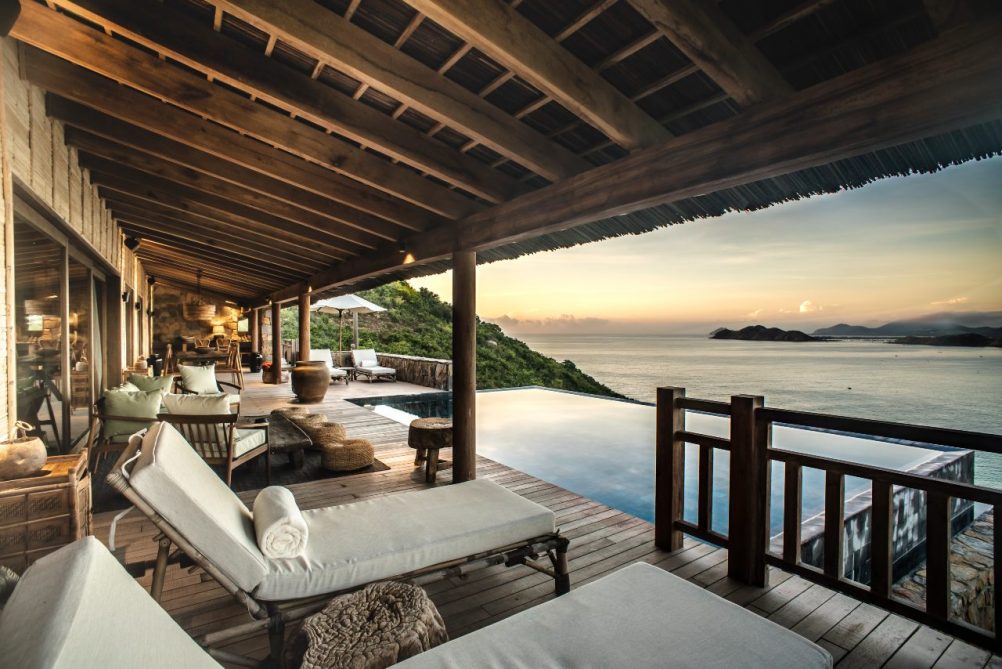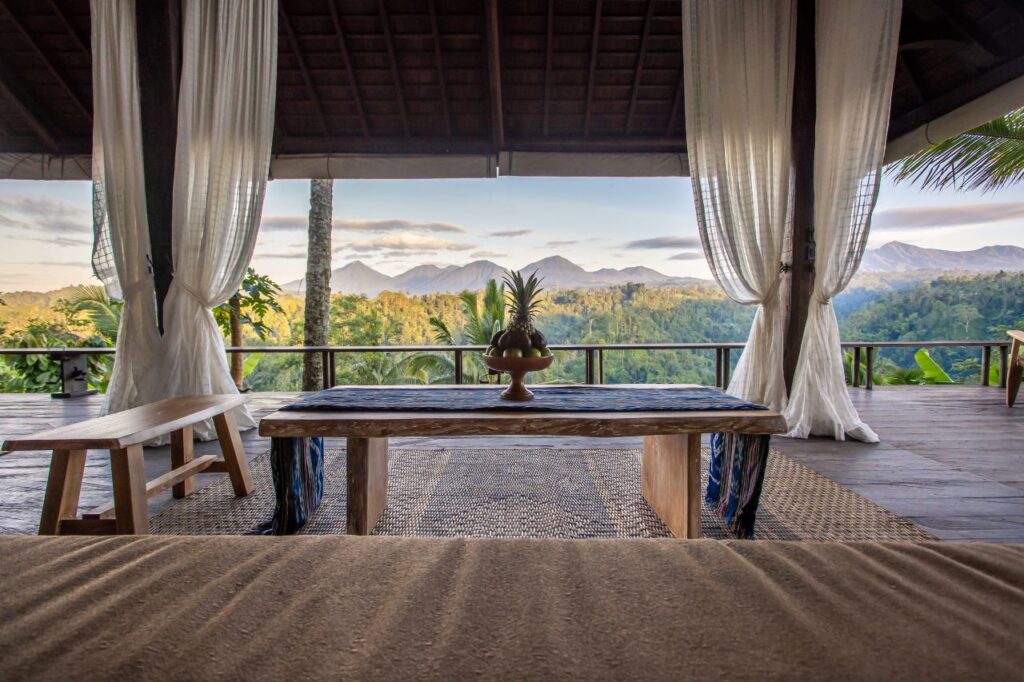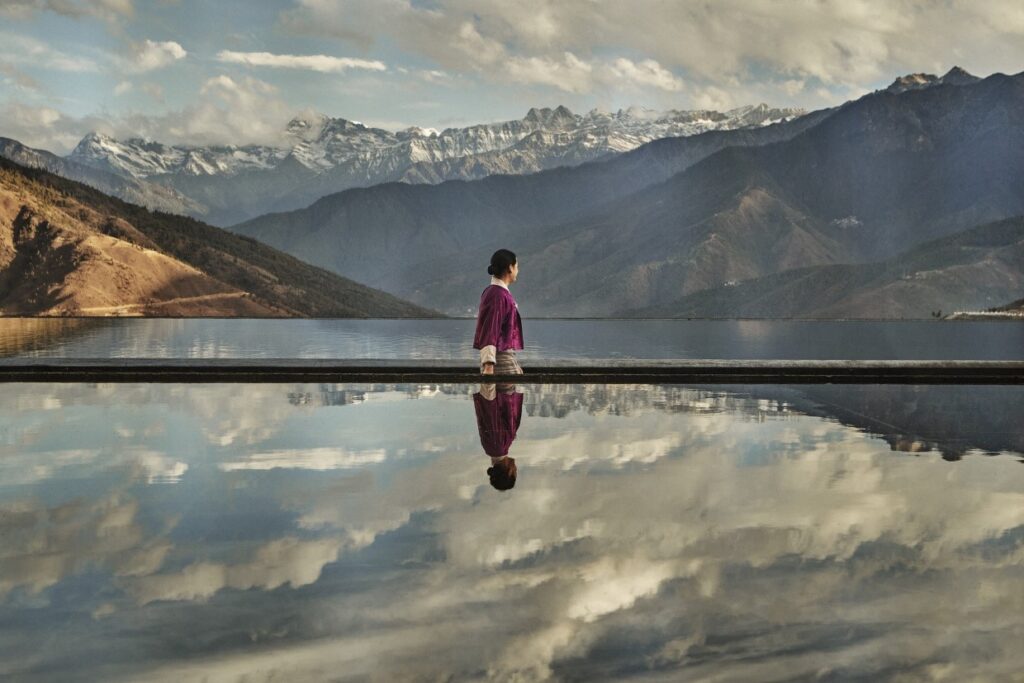The hotels taking sustainability to new heights
Why going green is no longer enough.
Words by Ute Junker
Photos Zannier Bai San Ho by Frederik Wissink
Originally published in the Australian Financial Review
At the Zannier Hotel Bãi San Hô, a new boutique resort tucked away on a quiet stretch of the Vietnamese coast, guests can pick their own panorama. Your choice of view – over the verdant paddy fields, across the waves that lap the powder-white sands, or out towards the mountain – also determines which local tribal architectural style you will be immersed in.
Inspired by fishermen’s houses, the Paddy Field Villas are built on stilts from reclaimed wood. The Beach Pool Villas draw on the traditions of the coastal Cham people, while the Hill Pool Villas, appropriately, derive their design from the longhouses of the mountain-dwelling Rade tribe. “Very logically, they build their houses out from the hill – there is less impact on the ground, and the views are better too,” says Zannier’s Quentin Guiraud.
Native materials also abound, with wood, stone, rattan and fabric all sourced locally. “Ninety-eight per cent of the materials we use come from around here. We build for the climate, and we honour local traditions at the same time.”
It’s an approach that’s typically Zannier. Launched in 2010 by Arnaud Zannier, the founder of Kickers footwear, Zannier Hotels offers its guests a deep dive into their destination. Each of its properties – including hotels in Cambodia and Namibia as well as forthcoming openings in Mexico and Minorca – is designed to let visitors immerse themselves not just in the local landscapes but also the local communities. At Bãi San Hô, for example, you can either head to the boutique to buy an exquisite handwoven basket, used by locals as a fish trap, or if you’d rather, you can visit the village and learn how to make one yourself.
“It’s a design specific to this village, that is handed by women from generation to generation,” Guiraud explains. “Guests can go by bicycle to the village, meet the family, and learn how to use the stripped bamboo to build the traps.”
As activities go, biking to a basket-weaving lesson is a long way from, say, a chauffeured city tour in the back seat of a Rolls-Royce. But as luxury hoteliers prepare themselves for a post-COVID world, Zannier is not the only hotel betting that, more than ever, travellers are interested not just in what their destination can do for them, but what they can do for their destination.
On the other side of the world, amid the rolling hills of Italy’s Piedmont region, the new Casa di Langa hotel is also putting guests in touch with the local way of life. Apart from the onsite cooking school, wine academy and a spa where treatments use local botanicals, the hotel offers a roster of activities such as joining truffle hunts and touring hill towns on a Vespa.
“When guests come to our territory, they have already seen Milano, Florence, Rome,” says the hotel’s general manager, Eva Codina. “They want to learn from our territory, to discover the traditions and the way people live their lives, tending their little pieces of land, making their own pasta, sitting in the bar in the afternoon drinking coffee, playing cards. That’s what we try to share with our guests.”
Casa di Langa is just as interested as sharing with the community, however. Not content with merely using local materials and techniques, the hotel also kept it local when looking for suppliers of all kinds. “We like to work with locals, from the construction company to the people who sourced our faucets,” Codina says.
Building ties with the local community ranks alongside the geothermal heating, solar energy and recycled water as part of the hotel’s sustainability agenda. “Interest in all these things is growing,” Codina says. “Maybe because of the pandemic, more people are starting to think how they can live better, that we need to take better care of our land and our people.”
“There is a line in the sand now,” agrees Garth Solly, general manager of The Landing. Set on 400 hectares, the collection of four luxury residences set in the Bay of Islands – part of the Luxury Lodges of New Zealand portfolio – has long been at the forefront of sustainability, known in particular for its commitment to land regeneration.
Its long-standing planting program, for instance – more than a million native trees and shrubs planted across the property – combined with a predator control program has drawn a rich variety of birdlife to the area, including one of New Zealand’s densest kiwi populations.
Solly says that among his guests, interest in sustainability, particularly carbon-neutral travel, has never been higher. “Especially in the final season before lockdown, it was really common for our guests to be broaching conversations about offsetting carbon. It’s now becoming an expectation, rather than a nice-to-have.”
Sarah Hull of Cooper and Company, the private investment firm that owns not just The Landing but also Auckland’s Hotel Britomart, part of the first green-certified precinct in New Zealand, says that the launch last year of The Landing’s first sustainability plan has brought transparency to existing practices.
“We have gone through and looked at every single part of our business to calculate our activities and the emissions they produce,” says Hull. “We are fortunate that we have a carbon sink thanks to all of our native trees, but this process is helping us write a plan to ensure we are carbon neutral.”
Carbon emissions are only one focus of the property’s sustainability efforts. “We’re also looking at water use, at how you treat staff, at what you’re doing for the community,” Hull says. “Over the last few years, we have been creating a record of all the Maori sites on the property and given that back to the local iwi [tribe], to help sustain that history.”
At Bãi San Hô, landscape regeneration is also at the top of the agenda. Less than one per cent of the resort’s 98 hectares are impacted by buildings and roads and around 97 per cent of the resort is covered by vegetation, including 30,000 shrubs and grasses and 600 trees planted as part of Zannier’s revegetation program. The landscapers were at work even before the builders moved in – but they weren’t the first on the scene. That honour went to the English teachers.
“We offer complimentary English classes for the local community, specifically designed for local inhabitants between 18 and 35 years old who could potentially join our labour force,” Giraud explains.
Setting up links with the locals also benefits hotel staff. “Our gardeners learned from the farmers how to best grow the endemic spas, and some of our spa treatments use recipes we learned from the local medicine man,” Giraud says.
Ultimately, the English lessons are about more than just recruiting staff. Some of the villagers may use their English skills to start a business, to find employment elsewhere – or simply to have a chat with travellers who visit their village. At its most fundamental, the language lessons are tool for building bonds – which, Guiraud says, is what travel is all about.
“It’s about connection, it’s about emotion – that’s what brings memories for life.”



